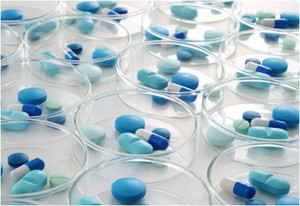Results of phase I clinical studies of candidate adalimumab biosimilar SB5, etanercept biosimilar SB4 and infliximab biosimilar SB2, demonstrated equivalence safety profiles to their originator biologicals in healthy subjects [1-3].
The phase I, randomized, single-blind, parallel group, single dose studies were designed to demonstrate the pharmacokinetics (PK), safety, tolerability and immunogenicity of candidate adalimumab biosimilar (SB5) from Merck and Samsung Bioepis (a Biogen and Samsung joint venture) compared to Humira (adalimumab), of their candidate infliximab biosimilar (SB2) compared to Remicade (infliximab) and of their candidate etanercept biosimilar (SB4) compared to Enbrel (etanercept).
The results of the phase I trials were presented at the European League Against Rheumatism (EULAR) 2015 Congress held in Rome, Italy on 10–13 June 2015.
The primary outcome measures in the three studies were the area under the concentration-time curve from time zero to infinity (AUCinf) and the maximum serum concentration (Cmax). For SB2 and SB5, the area under the concentration-time curve from time zero to the last quantifiable concentration (AUClast) was also a primary outcome measure, whereas in the SB4 trial this was a secondary outcome measure.
For the adalimumab trial, 189 healthy subjects were randomized to one of the three arms and received a single 40 mg dose of SB5, EU-sourced adalimumab (EU-ADL), or US-sourced adalimumab (US-ADL) by subcutaneous injection on Day 1 and then were observed for 71 days during which the PK, safety, tolerability and immunogenicity measurements were made. All of the 90% confidence intervals (CIs) for the geometric least squares means (LSMeans) ratios of primary PK parameters for SB5 and EU-ADL comparison, SB5 and US-ADL comparison, and EU-ADL and US-ADL comparison were within the predefined equivalence margin of 0.8 to 1.25. The incidence of adverse events was similar between the groups and there were no statistically significant differences in the incidence of post-dose anti-drug antibodies between the three groups.
For the etanercept trial, 138 healthy subjects were randomized in a 1:1 manner to receive a single 50 mg subcutaneous dose of SB4 or the reference drug [Part A: SB4 or EU-sourced etanercept (EU-ETN), Part B: SB4 or US-sourced etanercept (US-ETN), Part C: EU-ETN or US-ETN] in Period 1 followed by the crossover treatment in Period 2 according to their assigned treatment sequence. The geometric LSMeans ratio of AUCinf and Cmax were 0.990 and 1.037 (Part A), 1.011 and 1.044 (Part B), and 1.005 and 1.033 (Part C), respectively. All of the 90% CIs for the primary PK parameter comparisons in Part A, B and C were completely contained within the predefined equivalence margin of 0.8 to 1.25. The incidence of adverse events was similar between the groups.
For the infliximab trial, 159 healthy subjects received a single 5 mg/kg dose of SB2, EU-sourced infliximab (EU-INF), or US-sourced infliximab (US-INF) by intravenous infusion on Day 1 and then were observed for 71 days during which the PK, safety, tolerability, and immunogenicity measurements were made. All of the 90% CIs for the geometric LSMeans ratios of primary PK parameters for SB2 and EU-INF comparison, SB2 and US-INF comparison, and EU-INF and US-INF comparison were within the predefined equivalence margin of 0.8 to 1.25. The incidence of adverse events was similar between the groups and there were no statistically significant differences in the incidence of post-dose anti-drug antibodies between the three groups.
The authors concluded that these three studies ‘demonstrated PK equivalence’ between SB5, SB4 and SB2 compared to their respective EU- and US-sourced originator biologicals, as well as between the EU- and US-sourced originators in healthy subjects. All products were also generally well tolerated with similar safety profiles.
Conflict of interest
The authors of the abstracts [1-3] have received grant/research support from Samsung Bioepis or are employees of Samsung Bioepis.
Editor’s comment
It should be noted that data of the studies presented in this article were published as abstracts and presented at a conference. These data and conclusions should be considered to be preliminary until published in a peer-reviewed journal.
Related articles
Positive phase III results for candidate etanercept and infliximab biosimilars
Phase I studies of infliximab and rituximab biosimilars demonstrate pharmacokinetic similarity
References
1. Shin D, Kim Y, Kim HS, Fuhr R, Körnicke T. A phase I pharmacokinetic study comparing SB2, an infliximab biosimilar, and infliximab reference product (Remicade®) in healthy subjects. EULAR 2015; 10–13 June 2015; Rome, Italy.
2. Lee YJ, Shin D, Kim Y, et al. A phase I pharmacokinetic study comparing SB4, an etanercept biosimilar, and etanercept reference product (Enbrel®) in healthy male subjects. EULAR 2015; 10–13 June 2015; Rome, Italy.
3. Shin D, Kim Y, Kim HS, Fuhr R, Körnicke T. A phase I pharmacokinetic study comparing SB5, an adalimumab biosimilar, and adalimumab reference product (Humira®) in healthy subjects. EULAR 2015; 10–13 June 2015; Rome, Italy.
Permission granted to reproduce for personal and non-commercial use only. All other reproduction, copy or reprinting of all or part of any ‘Content’ found on this website is strictly prohibited without the prior consent of the publisher. Contact the publisher to obtain permission before redistributing.
Copyright – Unless otherwise stated all contents of this website are © 2015 Pro Pharma Communications International. All Rights Reserved.
Source: Biogen, ClinicalTrials.gov, EULAR, Merck








 0
0











Post your comment